Concept of Blue Economy
Since the inception of the 2030 Agenda for Sustainable Development (A/RES/70/1), the scope of the blue economy has expanded enormously. Earlier, the main focus was towards socio-economic development, but the idea of the blue economy is transforming and incorporating all the economic activities that are directly or indirectly linked with the oceans. Moreover, the “blue economy” concept seeks to promote economic growth, social inclusion, and the preservation or improvement of livelihoods while at the same time ensuring the environmental sustainability of the oceans and coastal areas (World Bank, 2017).
The blue economy is one of the sources of wealth and links economies with the world through the sea and oceans. It plays a central part in the global economy. If we compare the blue economy with the national economy, it is the seventh-largest economy globally (Yokova et al., 2021).
Blue Economy in the UN SDGs
The Sustainable Development Goals (SDG) 14 covers all the aspects of life below water. It is about protecting and sustainably using seas, oceans, and marine resources.
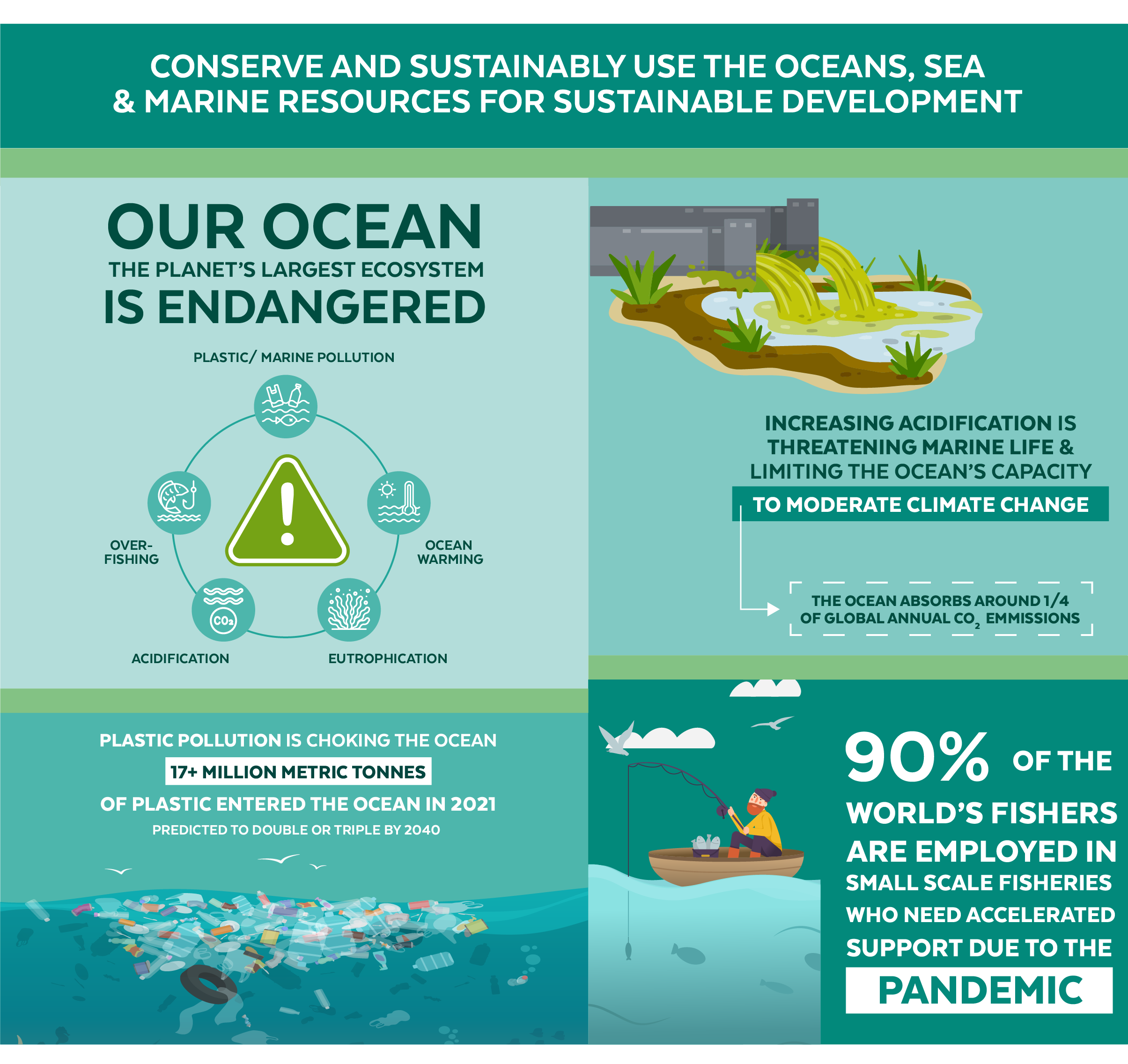 The UN report has revealed the degradation caused to the blue resources due to irrational policies and the growing human population. Approximately 30% of the marine habitat has been destroyed, and 30% of the fish stock is over-exploited; Marine pollution has increased multi folds; each minute, 15 tons of plastic are released into the oceans. 20% of all coral reefs have been destroyed irreversibly, and another 24% are at immediate risk of collapse. Around 1 million sea birds and 100,000 marine mammals are harmed or die annually due to ocean pollution. Oil and gas consumption was 20% in 1980, which increased to 30% in 2014 from the ocean floor (United Nations 2015)
The UN report has revealed the degradation caused to the blue resources due to irrational policies and the growing human population. Approximately 30% of the marine habitat has been destroyed, and 30% of the fish stock is over-exploited; Marine pollution has increased multi folds; each minute, 15 tons of plastic are released into the oceans. 20% of all coral reefs have been destroyed irreversibly, and another 24% are at immediate risk of collapse. Around 1 million sea birds and 100,000 marine mammals are harmed or die annually due to ocean pollution. Oil and gas consumption was 20% in 1980, which increased to 30% in 2014 from the ocean floor (United Nations 2015)
Globally, coastal water is deteriorating due to pollution and coastal eutrophication (overflow of nutrients in water), which in turn is decreasing marine biodiversity and species. The declining health of the oceans has an adverse effect on people, their earnings and entire economies. However, coastal populations entirely relying on ocean resources are the most affected.
Blue Economy in Pakistan
Pakistan is blessed with the blue natural resource, and its coastal area comprises 1,050 km, including the continental shelf. The country has extended its coastline, harbours, marine resources and sea trade to develop the maritime sector. The country has extended the Exclusive Economic Zone (EEZ), the UNCLOS-approved sea zone. The country is estimated to have the sixth-largest mangrove area compared to the world.
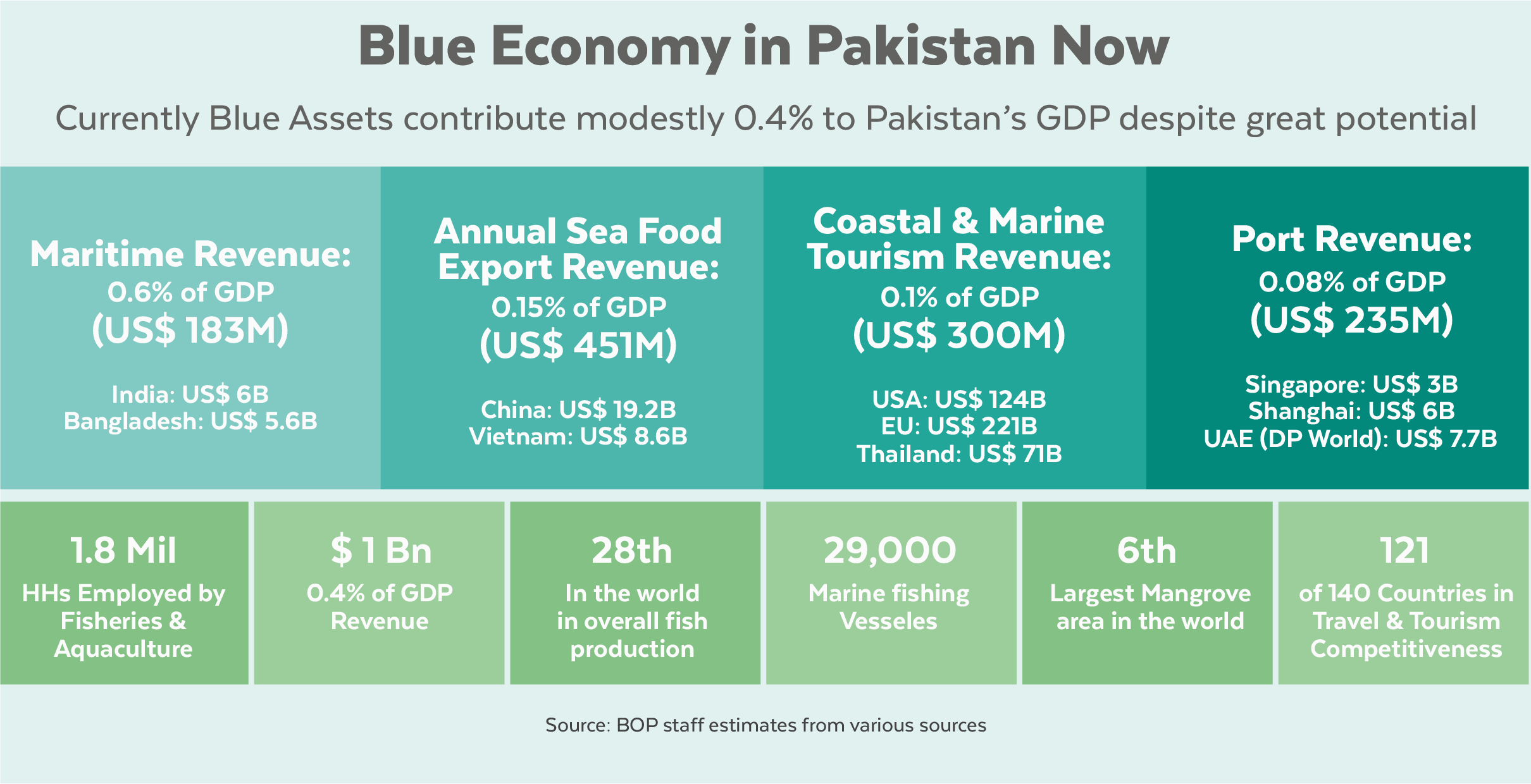 The blue economy is contributing around US $ 1 billion or 0.4% to the GDP of Pakistan. Maritime tourism contributes approximately US$300 million (0.1% of GDP). However, it has huge potential for international and domestic tourism. Its revenue projection is $183 million, indicating that the country’s blue economy is far behind neighbouring countries, i.e., India (US$ 5.6 billion) and Bangladesh (US$6 billion). The seafood earning is only $450 million (0.2% of GDP) (Ejaz, 2021). As per Environmental Protection Index 2022, out of 180 countries, Pakistan stands at 142.
The blue economy is contributing around US $ 1 billion or 0.4% to the GDP of Pakistan. Maritime tourism contributes approximately US$300 million (0.1% of GDP). However, it has huge potential for international and domestic tourism. Its revenue projection is $183 million, indicating that the country’s blue economy is far behind neighbouring countries, i.e., India (US$ 5.6 billion) and Bangladesh (US$6 billion). The seafood earning is only $450 million (0.2% of GDP) (Ejaz, 2021). As per Environmental Protection Index 2022, out of 180 countries, Pakistan stands at 142.
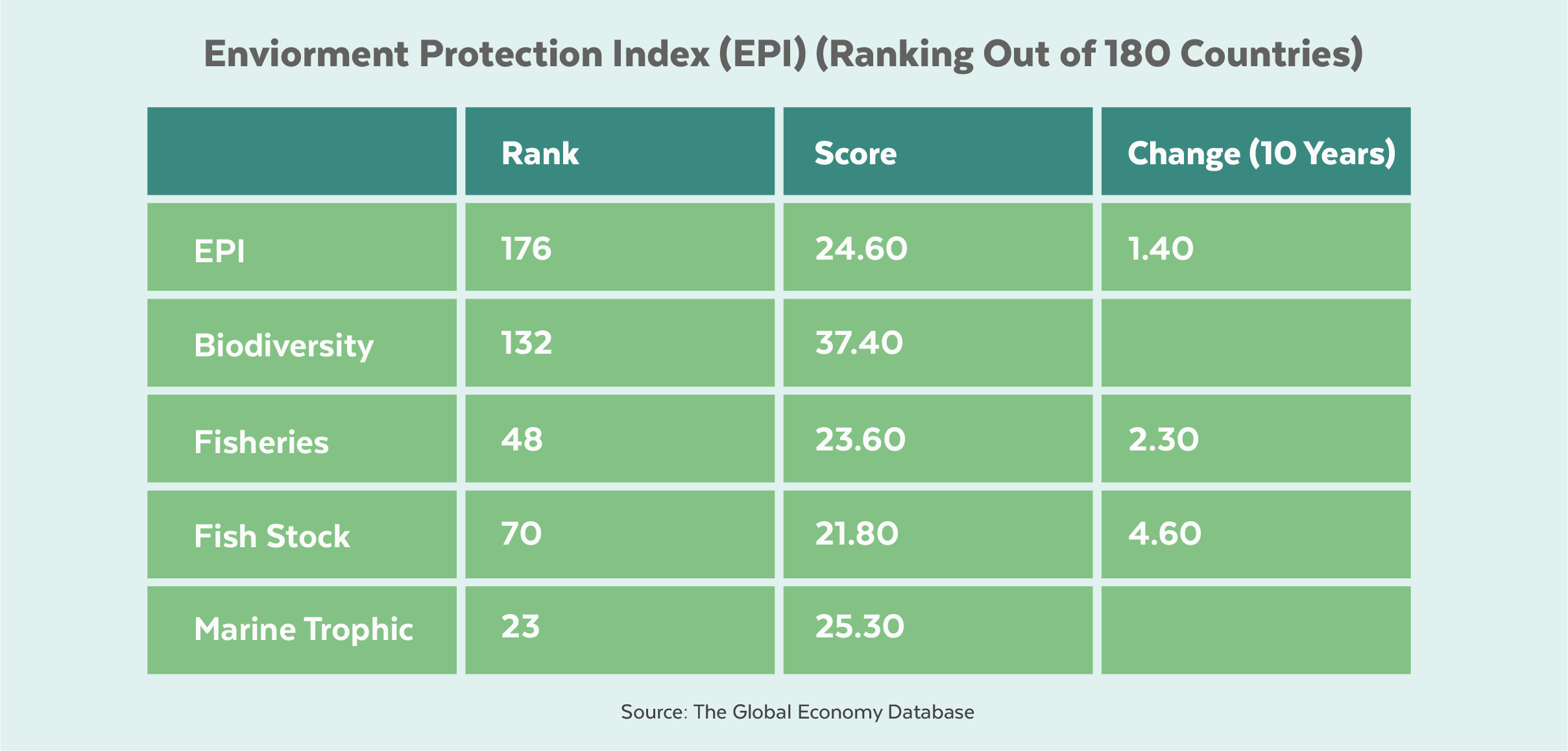 The blue economy can potentially reduce the country’s poverty rate, still it is facing various challenges, such as fragmented government, lagging technology, poor control of quality, lack of innovation, degradation of mangrove forests, lack of spatial zoning and marine pollution.
The blue economy can potentially reduce the country’s poverty rate, still it is facing various challenges, such as fragmented government, lagging technology, poor control of quality, lack of innovation, degradation of mangrove forests, lack of spatial zoning and marine pollution.
Coastal and Marine Tourism
The overall tourism industry of Pakistan is underdeveloped in comparison with regional countries. The main reasons it became underdeveloped are poor connectivity, tourism infrastructure and a weak security environment. The countries with the highest tourist revenue have large coastal areas and outstanding infrastructure facilities. Thailand earned 3.4% of its GDP through international tourism, and countries like Sri Lanka have 1.2% of their GDP through tourism. Pakistan, in comparison, earns 0.25% of its GDP, making it one of the most underdeveloped markets for international tourism (Ali et al., 2022).
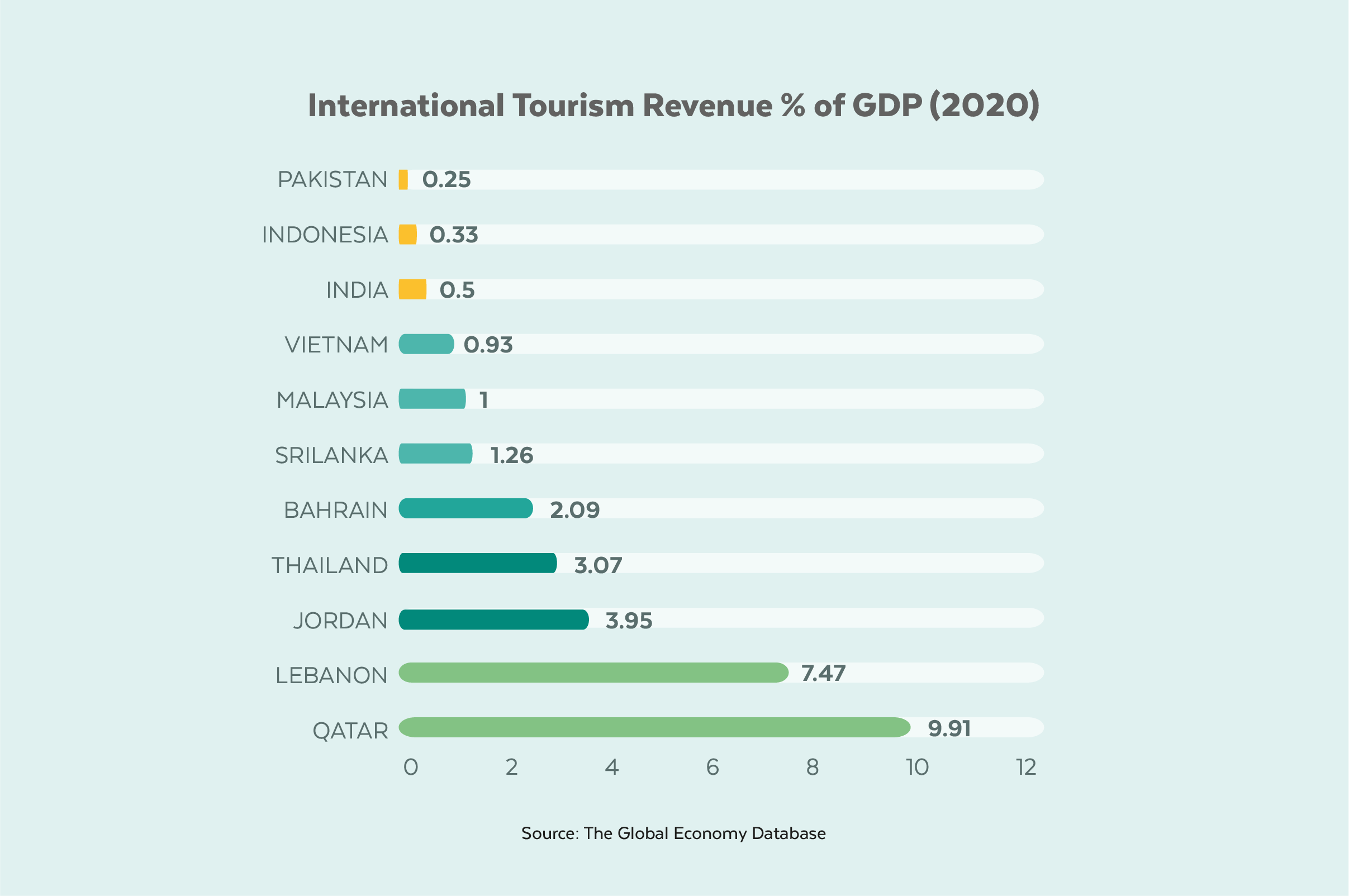 It was estimated that counties should earn around US$ 300 million from coastal tourism. The Pakistan blue economy has the potential to earn revenue. As per the Maritime Study Forum, US $ 5 billion can be generated from the improving infrastructure of coastal areas. The country should learn from the experience of India; its Kerala state introduced a tourism policy in 2012 with a focus on developing a distinct geography of 600 km of coastline and 1,500 km of backwater with a national wildlife park (Naureen, 2020).
It was estimated that counties should earn around US$ 300 million from coastal tourism. The Pakistan blue economy has the potential to earn revenue. As per the Maritime Study Forum, US $ 5 billion can be generated from the improving infrastructure of coastal areas. The country should learn from the experience of India; its Kerala state introduced a tourism policy in 2012 with a focus on developing a distinct geography of 600 km of coastline and 1,500 km of backwater with a national wildlife park (Naureen, 2020).
Challenges of Blue Economy and Sustainable Development
The spill of tonnes of untreated waste into the water increases marine pollution.
Lagging behind marine technology, research and education.
Fishing and cargo companies are using outdated methods for fishing and shipping.
Excessive and unregulated fishing.
Use of illegal nets and lack of fish processing techniques.
The Gawadar port has the ability to offload cargo material of around 7,000 million tonnes annually, but all these features go in vain due to the absence of modern technology.
Lack of funding and financing, lack of incentives to the private sector, poor trade capacity,
Pervasive unawareness, deficient educational and training capacities.
Non-availability of research, innovation and policy-based solutions.
Policy Recommendations
A robust institutional framework is needed that collects accurate data to make informed decisions.
There is a need for spatial planning for the marine and coastal economy. An expert group should be selected to set clear goals and targets for spatial planning. The body will also be responsible for integrating various sectors of the blue economy.
Government should take some effective measures to increase revenue from the fishery sector as the price of fish is low in Pakistan as compared to other countries of the region.
The use of an efficient satellite system for the regulation and management of fisheries is required.
Government should encourage private and public partnerships.
An inclusive financing facility is required to incentivise communities associated with fisheries by providing interest-free loans through micro-finance.
Special Maritime Industrial Zones are needed to be developed with the installation of the latest digital technologies.
Integrated planning is needed to establish a network of researchers, industry stakeholders, government personnel and media.
Technology enhancement is required to upgrade exploration and deep-sea mining.
Reference
Ali et al. (2022). Pathways to a Sustainable Blue Economy: Role of Financial Institution. Bank Of Punjab.
Ejaz, K. (2021). How Much Can Pakistan Earn from Blue Economy? Retrieved from National Frontier: https://thenationalfrontier.com/2021/03/26/how-much-can-pakistan-earn-from-blue-economy/
Naureen, F. (2020). Pakistan has 4 -5 bn Coastal Tourism Potential. Retrieved from Daily Times: https://dailytimes.com.pk/662925/pakistan-has-4-5bn-coastal-tourismpotential-experts/ritime
United Nation. (2015). Transforming our world: the 2030 Agenda for Sustainable Development. Retrieved from SDGs: https://sdgs.un.org/2030agenda
World Bank. (2017). The Potential of the Blue Economy. United Nation. Retrieved from https://sustainabledevelopment.un.org/content/documents/15434Blue_EconomyJun1.pdf
Yokova et al. (2021). Transforming the EU’s Blue Economy for a Sustainable Future – The role of the regions. Retrieved from EU regions week: https://eu.app.swapcard.com/event/eu-regions-week/planning/UGxhbm5pbmdfNjMxMjY3
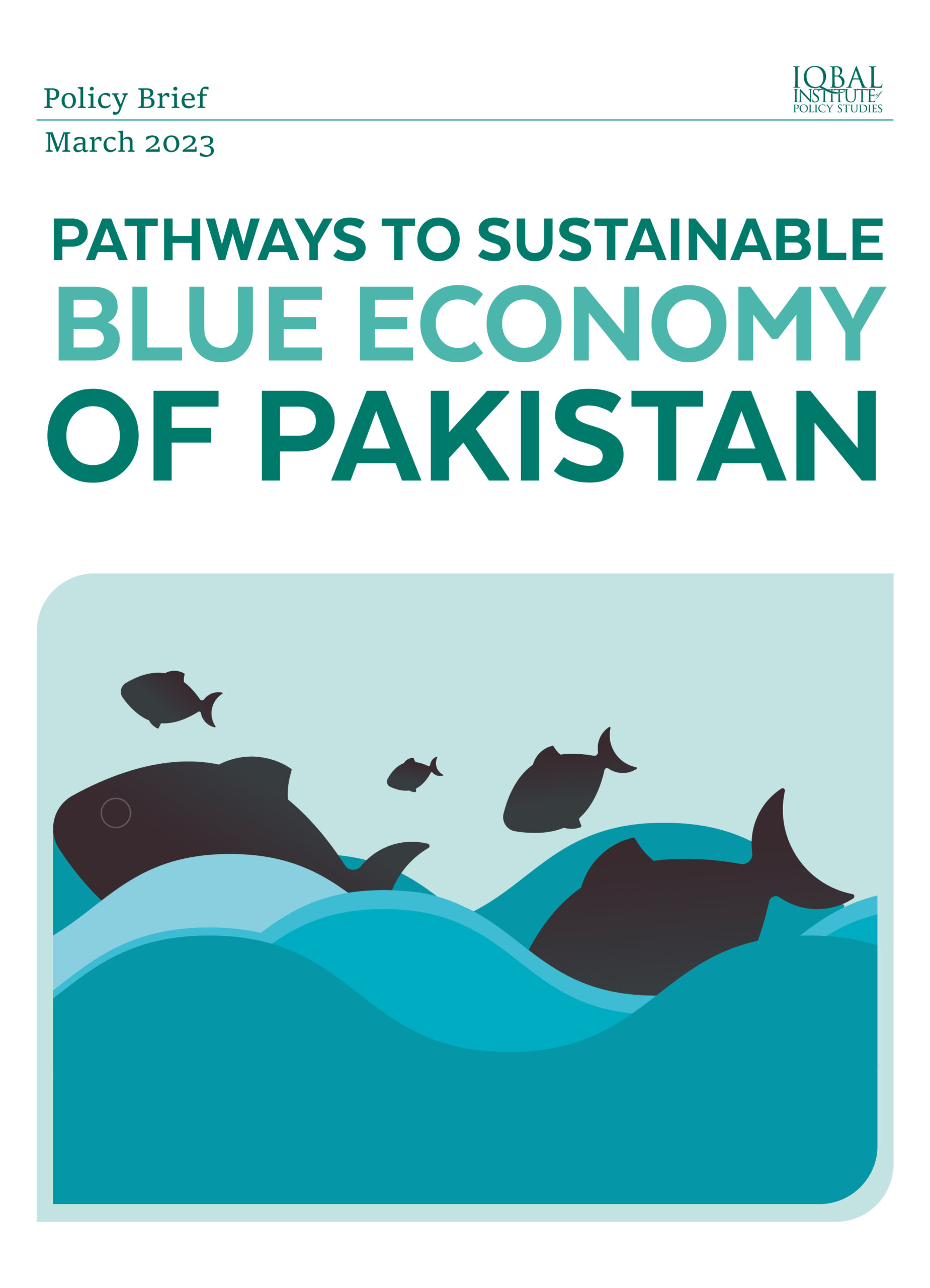

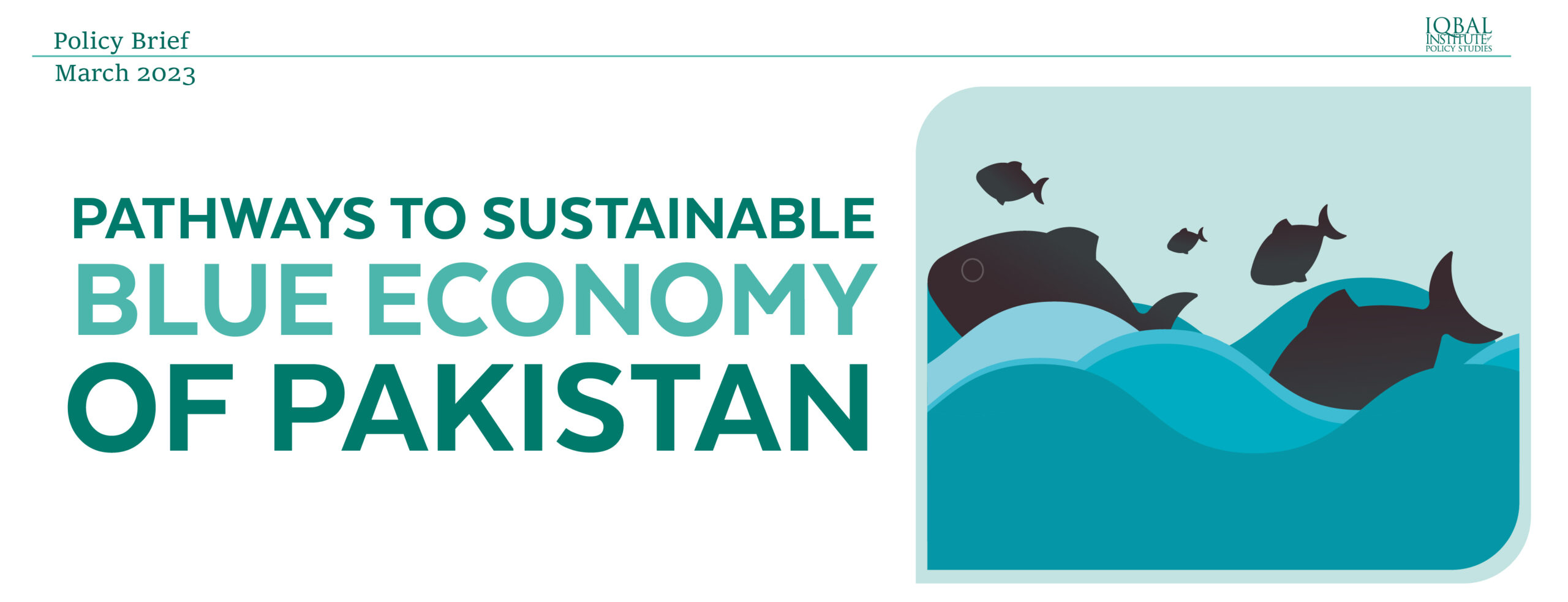
Leave a Reply